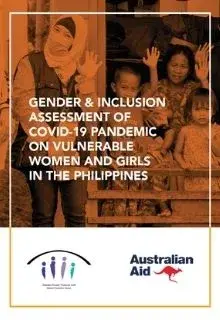More than a year into the COVID-19 pandemic, untold suffering and deaths have now devastated millions of people throughout the world. The gendered impacts of this health crisis are emerging, particularly the constraints placed on sexual and reproductive health needs and an escalation in the incidence of gender-based violence. Yet these need further investigation as the differences vary across subgroups of women and girls.
But even before the COVID-19 pandemic hit, increasing gender inequality has already been documented. Filipina women are being economically marginalized, politically subordinated, and restrictions put on their reproductive decisions. Women and girls experience multiple and disproportionate burdens of care work, and suffer from gender stereotyping, stigmatization, and sexual shaming. One out of four ever-married Filipina women report enduring physical, sexual or emotional violence.
UNFPA Philippines, together with 23 diverse organizations, gathered qualitative and quantitative evidence from nearly 1000 respondents’ interviews. The findings of the Gender & Inclusion Assessment (GIA) of the Impacts of the COVID-19 Pandemic on Vulnerable Women and Girls indicate that the COVID-19 pandemic has worsened the situation of many women and girls across vulnerable subgroups.
Recommendations from the study’s authors address (1) the need for women to be among designers and decision-makers of the COVID-19 response, (2) the importance of centering marginalized communities among the measures of the success, ensuring their well-being as a criterion for how effective the response is evaluated, and (3) that communications regarding life-saving information and services need to target communities that are offline as well.


